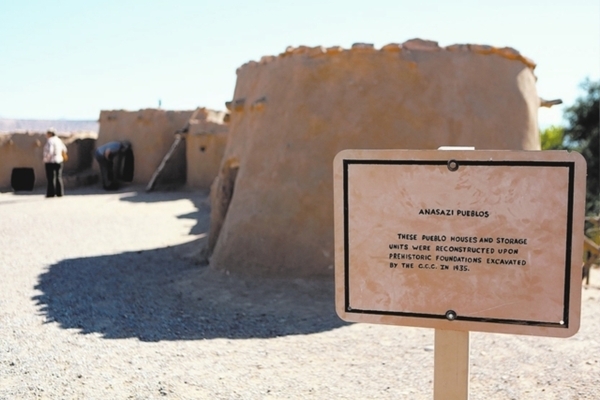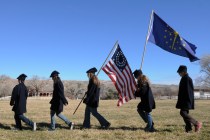Overton museum chronicles ancient culture
Sitting on a little bluff just south of Overton in Moapa Valley, Nevada's Lost City Museum preserves remnants of thousands of years of human occupation along the Muddy River in northeastern Clark County.
Built 80 years ago to house artifacts being excavated from ancient Puebloan sites ahead of the filling of Lake Mead, the Pueblo Revival-style museum is listed on the National Register of Historic Places.
To reach this gem, one of Nevada's seven state museums, drive north on Interstate 15 about 60 miles from Las Vegas to Exit 93, the turnoff on state Route 169 toward the pioneer Mormon farming communities of Logandale and Overton. Just south of Overton about 12 miles from the freeway exit, watch for the museum sign at the turnoff to a short spur road to the facility. You will find parking for buses and private vehicles, grounds landscaped with native desert vegetation and a shady picnic pavilion with tables and barbecue grills. Walkways lead to outdoor exhibits and the museum building.
Part of the state's Division of Museums and History, Lost City Museum of Archaeology is open from 8:30 a.m. to 4:30 p.m. daily, except on Thanksgiving, Christmas and New Year's Day. A $5 entrance fee is charged for adults. There is no charge for people younger than 18 or museum society members.
Inside, the museum protects a treasury of artifacts spanning 10,000 years of human activity in the fertile river valley. It is also home to an actual excavation site, a theater with two informative films, changing art exhibits and a museum store stocked with books, toys, Native America crafts and souvenirs. Outside, visitors explore an ancient pit house, a re-created small pueblo and a display of antique farm equipment.
First visited by nomadic hunters and gatherers who left few signs of their passing, the Muddy River Valley later attracted native people who farmed and irrigated small patches of corn, beans, squash and cotton, as well as hunting and foraging for native foods. These people lived by their crops in multi-unit, pueblo-style dwellings, many with kivas built below ground level. An estimated population of 10,000 residents occupied many such structures along 25 miles of the river valley. Formerly referred to as the Anasazi, this culture is now known as the Ancestral Puebloans. The people of the Muddy River Valley formed the westernmost extension of a culture that extended across Northern Arizona and parts of Southern Utah.
The culture disappeared by around A.D. 1200 across most of its range. It may have been a confederation of loosely related groups, but they had similar styles of architecture, pottery, basket-making and stone tool-making. They traded with each other and with distant cultures through a widespread network. The people of the Muddy River traded salt and turquoise mined nearby for items from as far away as the Pacific Coast and tropical southern Mexico. The Hopi people of Arizona claim the Ancestral Puebloans as their ancestors, but the collapse of the ancient culture remains unexplained.
The ruins in the river valley were noted by explorer Jedediah Smith in the 1820s. In the 1920s, Moapa Valley brothers John and Fay Perkins, who had explored the ruins and collected artifacts, spurred Nevada Gov. James Scrugham to take action to preserve them. He contacted archaeologist Mark R. Harrington of New York, who confirmed the importance of the ruins and began a series of excavations.
In the 1930s with the construction of Boulder Dam underway and Lake Mead soon to be filled, salvage of artifacts was imperative. The original adobe museum was built in 1935 by the Civilian Conservation Corps for the National Park Service. It was turned over to Nevada in 1953, but the artifacts were removed. The Perkins collection and other private collections donated to the state now form the core of artifacts on display in Nevada's Lost City Museum.
— Margo Bartlett Pesek's Trip of the Week column appears on Sundays.






















